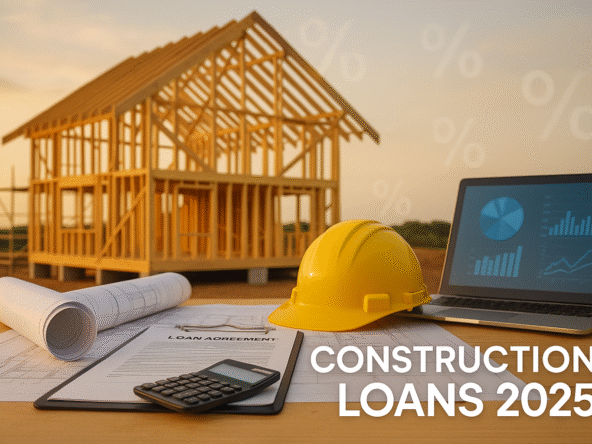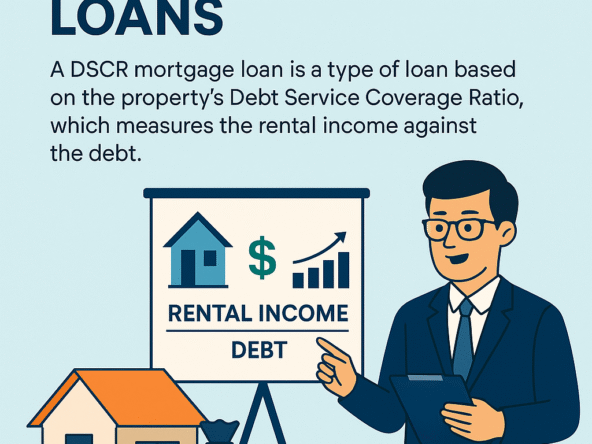Interest rates in the U.S. housing market have risen sharply in recent years, making monthly mortgage payments much higher than they were just a short time agowithroam.com. As a result, assumable mortgages – home loans that a buyer can take over from a seller – are getting renewed attention. In this blog post, we’ll explain what it means to assume a mortgage, which types of home loans are assumable (like FHA and VA loans), how to go about assuming a house loan step by step, the pros and cons of this strategy, and key legal/financial considerations unique to the U.S. housing market. Whether you’re a first-time homebuyer or a real estate investor, this guide will clarify how mortgage assumptions work in clear, beginner-friendly terms.
A young couple moves into their new home. Assuming a house loan can make such moves more affordable by letting buyers take over an existing mortgage at a lower interest ratepennymac.com. In a high-rate environment, the ability to “step into the seller’s shoes” on an older loan with a low interest rate can save homebuyers tens of thousands of dollars over the life of the loanlendingtree.com. Sellers, too, may find offering an assumable loan gives them a selling advantage, since the buyer gets to keep the original loan’s terms (including the interest rate, remaining balance, and repayment period) rather than taking out a brand-new mortgagemyhome.freddiemac.compennymac.com.
What Does It Mean to Assume a Mortgage?
Assuming a mortgage means taking over the seller’s existing home loan – you become responsible for the remaining loan balance and continue making payments under the same interest rate and terms the seller hadmyhome.freddiemac.com. In essence, you pick up the loan where the seller left off. For example, if a homeowner has a $250,000 mortgage at a 3% interest rate, a buyer who assumes that loan would take on the ~$250,000 balance at the 3% rate and the remaining repayment termbiggerpockets.com. This is very different from getting a new loan at current market rates, which might be much higher. By assuming the seller’s mortgage, the buyer bypasses starting a new loan and often avoids today’s higher interest rateshomelight.com. It’s essentially a transfer of debt along with the property: the buyer inherits the outstanding debt, and the seller is released from further liability on the loan (provided the assumption is done with lender approval, as we’ll discuss)biggerpockets.com.
Not all mortgages allow this transfer. Most conventional loans (those not backed by the government) include a due-on-sale clause requiring the loan to be paid in full when the home is sold, effectively blocking third-party assumptions in regular saleshomelight.com. However, certain loans – especially those backed by the U.S. government – are designed to be assumable, meaning a new buyer can take them over under specific conditions. In the next section, we’ll look at which types of loans are assumable.
Which Home Loans Are Assumable?
In the United States, government-backed home loans are the ones most commonly eligible for assumption. These include:
- FHA Loans (Federal Housing Administration): FHA-insured mortgages are generally assumablehomelight.com. FHA loans don’t have the typical due-on-sale restrictions that conventional loans dopennymac.com. A buyer can assume an FHA loan as long as they meet the FHA’s credit and financial requirements (usually a credit score of at least 580–620 and acceptable debt-to-income ratio)pennymac.com. Note: FHA loans come with mortgage insurance premiums (MIP), and the person assuming the loan will be responsible for those ongoing premiums as welllendingtree.com.
- VA Loans (Department of Veterans Affairs): VA home loans are also assumable by a new buyer – even if the buyer is not a veteran – provided the lender and the VA approve the assumption and the buyer meets credit/income criteriahomelight.com. VA loans originated after March 1, 1988 require lender approval for assumption, and the buyer must pay a 0.5% VA funding fee on the current loan balancepennymac.comlendingtree.com. Importantly, if a non-veteran assumes a VA loan, the original veteran’s VA entitlement (the benefit used to guarantee the loan) will remain tied up in that loan until it’s paid off; only a VA-eligible buyer can substitute their entitlement and free the seller’s entitlementpennymac.com.
- USDA Loans (U.S. Dept. of Agriculture): USDA rural home loans are generally assumable as wellhomelight.com. The buyer must meet USDA program eligibility (income and location requirements) and get USDA approval. In many cases, a USDA loan assumption may involve adjusting the loan terms (re-amortizing) to current market rates, except in certain intra-family transfers where the original rate/terms can carry overbiggerpockets.comlendingtree.com.
- Conventional Loans: Most conventional mortgages (those from private lenders or backed by Fannie Mae/Freddie Mac) are not assumable due to due-on-sale clauseshomelight.com. When a home with a conventional loan is sold, the loan typically must be paid off. Only a few exceptions exist – for instance, some adjustable-rate mortgages (ARMs) may be assumable if the loan contract permits ithomelight.com, and certain jumbo loans kept by portfolio lenders might allow assumption on a case-by-case basishomelight.com. These cases are rare and depend on the lender’s policies.
Important: All loan assumptions require the lender’s participation. Even if a loan is of an assumable type, the buyer will usually have to qualify with the lender (similar to applying for a new loan) before the mortgage can be transferredbiggerpockets.com. There are also owner-occupancy requirements for most assumable loans: FHA, VA, and USDA loans can typically only be assumed if the buyer will use the property as a primary residence (they’re not intended to be assumed by pure investors who won’t live in the home)eparadise.silverbaylending.com. Always check with the current loan servicer to confirm if a specific mortgage is assumable and what conditions apply.
Step-by-Step: How to Assume a House Loan (Mortgage Assumption)
If you’ve identified a home with an assumable mortgage and decide to pursue a loan assumption, here is a step-by-step guide through the process:
- Confirm the Loan Is Assumable: First, verify that the seller’s mortgage can be assumed. Ask the seller about their loan type, or carefully read the loan agreement for any assumption clause or a due-on-sale clause (which indicates the loan cannot be assumed)biggerpockets.com. If the loan is FHA, VA, or USDA, it’s likely assumable; with other loans, you’ll need to check with the lender. It’s wise for both buyer and seller to contact the loan servicer to explicitly confirm assumability upfront.
- Apply and Qualify with the Lender: Assuming a mortgage isn’t a simple handshake deal – the buyer must apply to the lender for approval to take over the loan. Essentially, you’ll go through a loan application and underwriting process similar to any new mortgagebiggerpockets.com. The lender will evaluate your credit score, income, debts, and overall financial health (the standard “4 C’s” of underwriting) to ensure you can repay the loanmyhome.freddiemac.com. The buyer needs to meet the lender’s requirements for the loan program (for example, VA loans require the assuming borrower to meet VA credit/income standards and get VA approval)pennymac.com. During this time, the lender may charge a processing fee (FHA assumption fees are typically capped around $500, and VA loans require a 0.5% funding fee)lendingtree.comveteransunited.com. This qualification step can take some time – potentially as long as a regular mortgage approval – because the lender is effectively substituting one borrower for another and will also prepare documents to release the seller from liabilitybiggerpockets.combiggerpockets.com.
- Figure Out the Down Payment (Equity) Requirement: One key difference with an assumption is handling the seller’s equity in the home. The buyer must make up the gap between the purchase price of the home and the outstanding loan balance. This generally means a much larger down payment than a typical loan. For example, if the home is selling for $400,000 and the seller’s remaining mortgage balance is $250,000, the buyer would need to bring $150,000 in cash or secondary financing to cover that equity differencelendingtree.com. In many cases, buyers use savings or a second mortgage (such as a home equity loan or other loan) to finance this amountlendingtree.com. Keep in mind that the second loan, if used, will likely have a higher interest rate than the assumed first mortgage, but it’s only needed for the smaller balance (in our example, $150k)lendingtree.com. Negotiating how to cover the equity is part of the assumption process – some sellers might even agree to a short-term seller financing arrangement for a portion of the price, though most often the buyer needs to secure the funds at closing.
- Complete the Assumption Transaction: Once the lender has approved the buyer and the buyer has the funds for the equity, the final step is to close the assumption. This involves signing an assumption agreement (a contract stating that the buyer assumes responsibility for the note and that the seller is released)biggerpockets.com. At closing, the buyer will pay the agreed-upon cash to the seller (for their equity), and the lender’s documents will officially substitute the borrower on the mortgage. The property title will transfer to the buyer, and the mortgage will continue with the buyer as the new obligor. The original seller is freed from liability on the loan going forwardbiggerpockets.com. Typically, because this is a transfer of an existing loan, there is no new appraisal required by the lender in an assumption (since the loan isn’t changing, just the borrower)biggerpockets.com – skipping the appraisal can save on closing costs. After everything is signed and recorded, the buyer will start making the mortgage payments going forward under the same terms (interest rate, remaining years, etc.), and the seller walks away with their equity.
Throughout this process, clear communication with the lender is critical. If a lender does not formally approve and recognize the assumption, the seller could remain on the hook for the debt or the loan could be called due immediately (more on these risks below)biggerpockets.com. Always follow the proper channels and get written confirmation of the assumption from the mortgage holder.
Pros and Cons of Mortgage Assumption
Like any financing strategy, assuming a house loan comes with a mix of advantages and potential drawbacks. Here are the key pros and cons for buyers (and sellers) to consider:
Pros
- Lock in a Lower Interest Rate: The biggest draw of an assumable mortgage is the chance to take over a below-market interest rate. Many U.S. homeowners who bought or refinanced in past years have rates in the 2–4% rangelendingtree.com, while current mortgage rates are much higher. By assuming a low-rate loan, a buyer could save significantly. For example, a $400,000 loan at a 7% interest rate has a monthly principal and interest payment of about $2,660, whereas the same loan at 3% interest would only be about $1,686 – nearly a $1,000 per month difference in paymentveteransunited.com. Over a 30-year loan, that interest rate savings could add up to tens of thousands of dollars in reduced paymentslendingtree.com. This improved affordability can be a game-changer for homebuyers and even make certain deals possible when they otherwise wouldn’t be.
- No (or Reduced) Appraisal and Closing Costs: In a traditional home purchase, the buyer’s lender usually requires a new appraisal (to confirm the home’s value) and there are numerous loan origination fees. With a mortgage assumption, the existing loan is simply transferred, so no new appraisal is required in many casesbiggerpockets.com. This can save a buyer several hundred dollars. Additionally, many of the typical closing costs (loan origination fees, underwriting fees, etc.) are lower or not applicable. Assumptions still have some fees (for example, an FHA or VA assumption fee, recording fees, maybe escrow setup), but overall the closing costs tend to be lower than starting a brand-new mortgageveteransunited.comveteransunited.com. This benefits both parties: the buyer pays less in closing, and the seller might have an easier time with the sale.
- Attractiveness in a High-Rate Market (Easier to Sell): For sellers, having an assumable low-rate loan can be a major selling point. If interest rates in the broader market are 7% but your existing loan is at 3%, advertising that a qualified buyer can assume your loan could draw more interest to your listing. Buyers know they could save on financing costs, which might even allow the seller to command a slightly higher sale price since the interest savings offsets the price differencelendingtree.com. In a competitive or high-rate market, an assumable mortgage makes the property stand out and can facilitate a faster salebiggerpockets.com.
- Simplified Financing Process: While the buyer does have to qualify with the existing lender, they don’t have to shop around for a new mortgage or worry about current market rates and termsbiggerpockets.com. For the buyer, this can reduce the stress of finding a loan, comparing rates, and dealing with a new lender’s process. Essentially, the financing is already in place; it’s a matter of getting the lender’s approval to swap in a new borrower. This can streamline the purchase in some cases.
Cons
- Large Down Payment (Equity Requirement): The flip side of not taking out a brand-new loan is that the buyer must cover the seller’s equity. If the seller has owned the home for a while or if home values have risen, this equity gap can be substantial. In many assumptions, the required down payment will be far more than a typical 5% or 20% – it could be 30%, 40% or more of the purchase price, depending on how much the seller owes vs. the home’s valuebiggerpockets.com. For instance, if an FHA home only required 3.5% down when the seller bought it, a few years later the buyer assuming that loan might effectively need to put down 20-30% (or get a secondary loan) to complete the purchasenewamericanfunding.com. This high up-front cash requirement can be a barrier for many buyers. It also means the buyer might end up with two loans – the assumed first mortgage and a second mortgage – which can complicate finances.
- Must Meet Lender’s Qualifications: Even though you aren’t getting a brand new loan, the lender will vet the buyer’s creditworthiness before approving an assumption. If the buyer has poor credit, insufficient income, or any financial issue that wouldn’t qualify them for a similar new loan, the lender can refuse to approve the assumptionbiggerpockets.com. In such cases, the deal could fall through unless the buyer finds alternative financing. From the seller’s perspective, if the buyer cannot fully qualify, the lender might not release the seller from liability – meaning the seller could remain secondarily liable if payments aren’t madebiggerpockets.com. This is why it’s critical to go through the proper assumption process. Essentially, assumptions are not a loophole around underwriting; the buyer needs to financially qualify just as they would for any mortgage.
- Limited Loan Choices & Terms: When you assume a mortgage, you’re accepting the loan’s existing terms – you don’t get to customize the loan. Some buyers prefer to shop around for different loan options (fixed vs ARM, different loan lengths, etc.) and find the best fit for their situation. With an assumption, you have to take what’s there or leave itbiggerpockets.com. If the assumed loan is an adjustable-rate mortgage or has other less favorable terms, the buyer must be comfortable with that. Additionally, the remaining term on the loan will be shorter than a new 30-year loan. For example, if the seller’s mortgage has 20 years left, the buyer will be assuming a 20-year loan – which means higher monthly payments than a fresh 30-year schedule for the same amount. There’s also no option to borrow extra money for renovations or other purposes (as you might with a new loan or cash-out refinance) – you can only assume the current balance. In short, assumptions offer less flexibility than obtaining a brand new mortgage.
- Ongoing Obligations (Insurance, Fees): If you assume a loan, you also assume any ongoing costs attached to that loan. For instance, FHA loans carry mortgage insurance for the life of the loan (or at least 11 years, depending on down payment) – an FHA loan from a few years ago likely still has monthly insurance premiums, and you’ll continue paying those until the loan’s MIP rules allow cancellationnewamericanfunding.comlendingtree.com. With VA loans, while there’s no monthly mortgage insurance, the one-time 0.5% funding fee will apply for the assumption (unless the assuming party is exempt)lendingtree.com. Also, an assumable loan might have an escrow account for taxes and insurance that you’ll take over. None of these are deal-breakers, just things to be aware of. It’s important to review the current loan’s statements to see what the monthly payment includes (principal, interest, any escrow or insurance) so there are no surprises after assumption.
In summary, mortgage assumptions can offer tremendous interest rate advantages and cost savings, but they often require significant cash and careful qualification. Next, let’s look at a concrete example to see how the numbers can play out.
Example: How Mortgage Assumption Can Save Money
To illustrate the potential benefits of assuming a mortgage, consider this scenario:
- Home Purchase Price: $435,000 (current market value of the home).
- Seller’s Existing Loan: $300,000 remaining balance at a 3% interest rate, originally a 30-year loan with maybe ~25 years left.
- Current Market Rates: ~7% for a new 30-year fixed mortgage.
If you as the buyer assume the seller’s $300,000 loan at 3%, you need to pay the seller approximately $135,000 in cash (or via secondary financing) to cover the difference between the home’s price and the loan balance (this $135k becomes the seller’s equity that you’re effectively buying out)lendingtree.com. The assumed loan’s monthly payment on $300k at 3% (for the remaining term) would be roughly $1,686 per month for principal and interestveteransunited.com.
Now, compare that to a traditional purchase with a new loan: If you took out a new mortgage for the full $435,000 at a 7% interest rate, the monthly principal and interest would be about $2,660 per monthveteransunited.com. That’s a difference of nearly $1,000 every month. Even if you had to borrow that $135,000 equity as a second loan at, say, 7%, the payment on that second loan might be around $900 per month, which (when added to the first loan’s $1,686) is still roughly the same $2,600 total. The huge advantage comes if you can cover the equity with cash (or a cheaper second loan) – then you’re only paying $1,686 and saving nearly $1k monthly versus a full 7% loan. Over time, that interest savings is enormous and can easily reach tens of thousands of dollars savedlendingtree.com.
This example shows why buyers are excited about assumptions: the seller’s low interest rate is like a golden ticket in a time of high rates. On the seller’s side, it illustrates why a home with an assumable 3% loan might attract a higher price or more demand (because the financing perk is so valuable). Of course, the buyer in this example needed $135k up front – which is the main challenge. Every deal will differ in numbers, but if the seller’s rate is significantly below current rates, an assumption can drastically improve the buyer’s monthly affordability.
Legal and Financial Considerations in the U.S.
Before jumping into a mortgage assumption, it’s critical to understand some legal and financial factors unique to the U.S. market and mortgage contracts:
- Due-on-Sale Clause (and Exceptions): As mentioned, most conventional mortgages have a due-on-sale clause that gives the lender the right to demand full repayment of the loan if the property is sold or transferredlendingtree.com. Attempting to assume a non-assumable loan without lender approval (sometimes called a “silent assumption” or a subject-to purchase) can trigger this clause. If the lender finds out, they could foreclose or require immediate payoff of the loan – a risk not worth taking. There are some legal exceptions under the Garn-St. Germain Act (a federal law) that prevent lenders from enforcing due-on-sale in specific cases, such as when a home is transferred to a relative upon the borrower’s death, to a spouse during divorce, or into a living trusthomelight.com. These scenarios allow assumptions by operation of law (so a family member can keep the loan). But for an ordinary arms-length sale, due-on-sale will apply unless it’s an assumable loan or the lender explicitly consents.
- Release of Liability (Novation): A proper mortgage assumption with lender approval results in a novation, meaning the lender releases the seller from liability and substitutes the new buyer as the sole borrowerlendingtree.com. It is vital for sellers to ensure this is done. If a seller just “lets” someone take over payments without the lender’s agreement (a so-called simple assumption or subject-to deal), the seller’s name remains on the loan and they are still legally on the hook if the new owner stops payinglendingtree.com. Always get written confirmation that the seller is released from liability. From the buyer’s perspective, a formal assumption protects you as well – you gain all the rights of the borrower and there’s no risk of the loan being called due as long as you make payments. In short, don’t skip the paperwork. Work with the lender to formalize the assumption contractually.
- VA Loan Entitlement Concerns: For VA loans, sellers should be aware of the rules around VA entitlement. If another eligible veteran assumes the loan and substitutes their VA entitlement, the original veteran’s entitlement is restored, and they can use it again for another VA loan in the futurepennymac.com. But if a non-veteran assumes the VA loan, the original veteran’s entitlement stays tied up in that loan until it’s paid off (or later refinanced by the buyer). This can affect the seller’s ability to get a new VA loan themselves. It’s a unique VA consideration – one reason many veterans prefer the buyer be another vet if possible. Buyers of VA loans, conversely, should know they’ll have to pay the 0.5% funding fee (if not exempt) and follow VA guidelines, but they don’t need to have military service themselves to benefit from an assumed VA loan’s low ratelendingtree.com.
- Continued Insurance and Impounds: When you take over a loan, you’ll typically also take over the existing escrow/impound account tied to that loan. That means the lender might already be collecting money for property taxes and homeowners insurance as part of the monthly payment. Usually, the escrow balance gets adjusted at assumption (the seller may get any excess refunded and the buyer might have to deposit some amount to maintain the account). Make sure to confirm how property taxes and insurance will be handled at the transfer. Additionally, if the loan has mortgage insurance (like FHA MIP or private MI on a low-down-payment loan), the buyer will continue paying those premiums as required until the loan’s conditions for removal are metlendingtree.com. It’s wise to review the mortgage statement or ask the lender what the total monthly payment breakdown is post-assumption.
- Assumption Fees and Closing Details: In an assumption, the fees and closing process are a bit different. FHA and VA regulate what lenders can charge for an assumption (FHA typically allows a fee up to $500 in most caseslendingtree.com, and VA, as noted, charges 0.5% of the loan balance). There will still be closing agents or attorneys involved to handle the deed transfer and coordinate with the lender on the assumption agreement. Title insurance is usually updated (the buyer might get a new owner’s title policy, but no new lender’s policy since the lender is the same). Overall, the transaction costs are lower than a new loan, but be prepared to pay some fees to complete the process.
- Owner-Occupancy Requirement: One limitation to note, especially for investors: government-backed loans like FHA, VA, and USDA almost always require that the new borrower intend to occupy the property as their primary residence (at least for a period of time). They are not designed to be assumed by investors who will rent out the homeeparadise.silverbaylending.com. A real estate investor could only use this strategy if, for example, they plan to live in the home (house-hack it, etc.) or in certain family transfer situations. Trying to skirt the occupancy rules could constitute loan fraud. Conventional loans might be assumable to an investor in rare cases (like an assumable ARM), but again those are uncommon. So, mortgage assumptions in the U.S. are primarily a tool for owner-occupant buyers.
Helpful Resources and Next Steps
If you’re considering a mortgage assumption, here are a few tips and resources:
- Contact the Lender or Servicer Early: The current loan servicer is the gatekeeper for any assumption. Have the seller provide you with their loan servicer’s contact information so you can inquire about assumption procedures and requirements. They can tell you exactly what paperwork is needed and any fees involved. As one real estate agent advises, “speaking with the lender” is the first step to verify the loan is assumable and to understand the approval processhomelight.com.
- Consult Housing Counselors or Professionals: Because assumptions are not everyday transactions, you may benefit from professional guidance. A real estate agent experienced in assumable mortgages can help coordinate the process between buyer, seller, and lender. Additionally, a housing counselor or real estate attorney can explain your rights and review the assumption agreement before you sign, ensuring the documents properly release the seller and obligate the buyer. The U.S. Department of Housing and Urban Development (HUD) and the VA have resources and hotlines to answer questions about assumptions for FHA and VA loans, respectivelyhomelight.comhomelight.com.
- Research Specific Loan Guidelines: For more detailed information, you can refer to official resources. HUD’s website provides guidelines on FHA assumptions and requirements for credit qualification. The VA publishes rules about VA loan assumptions (e.g., VA lenders’ handbooks). The USDA Rural Development site also has information on assuming USDA loans. Checking these can give you insight into any nuanced rules (such as the dates after which qualification is needed – e.g., FHA loans after Dec 1989 need full qualificationbiggerpockets.com, or VA loans after 1988 need approvallendingtree.com).
- Evaluate the Trade-offs: Finally, carefully evaluate the financial trade-offs. Calculate how much you’d save in interest with the assumption versus the additional cash you must bring in. Also consider how long you plan to hold the property. If you might refinance or sell in a couple of years, the benefit of assumption might be less (since you’d incur costs now and possibly not keep the low rate long enough to realize huge savings). However, if this is a long-term buy-and-hold home or investment, locking in a low rate from years past can be incredibly advantageous. Use online mortgage calculators to plug in the assumed loan terms and compare to a new loan quote – the differences will help inform your decision.
In conclusion, assuming a house loan can be a powerful strategy for U.S. homebuyers and even some investors to combat high interest rates and reduce overall housing costs. It allows you to literally buy a house and its existing financing package. By understanding what loans are assumable, following the proper steps with the lender, and weighing the pros and cons, you can determine if a mortgage assumption is the right path for your next home purchase. Always perform due diligence and, when in doubt, seek expert advice – an assumable mortgage is an attractive opportunity, but it works best when everyone knows the rules and their responsibilities going in. Happy house hunting, and may you find that perfect home with a perfect assumable loan!
Sources:
- Freddie Mac – What You Should Know About Mortgage Assumptionsmyhome.freddiemac.commyhome.freddiemac.com
- Pennymac – Understanding Assumable Mortgagespennymac.compennymac.compennymac.com
- HomeLight – How to Assume a Mortgagehomelight.comhomelight.comhomelight.com
- BiggerPockets – Assumable Mortgages: How They Workbiggerpockets.combiggerpockets.combiggerpockets.com
- LendingTree – What Is an Assumable Mortgage?lendingtree.comlendingtree.com
- Veterans United – VA Loan Assumption (example rates)veteransunited.com
- New American Funding – FHA Assumable Loannewamericanfunding.comnewamericanfunding.com
- Erica Paradise (Silver Bay Lending) – Assumable Mortgages Infoeparadise.silverbaylending.com





